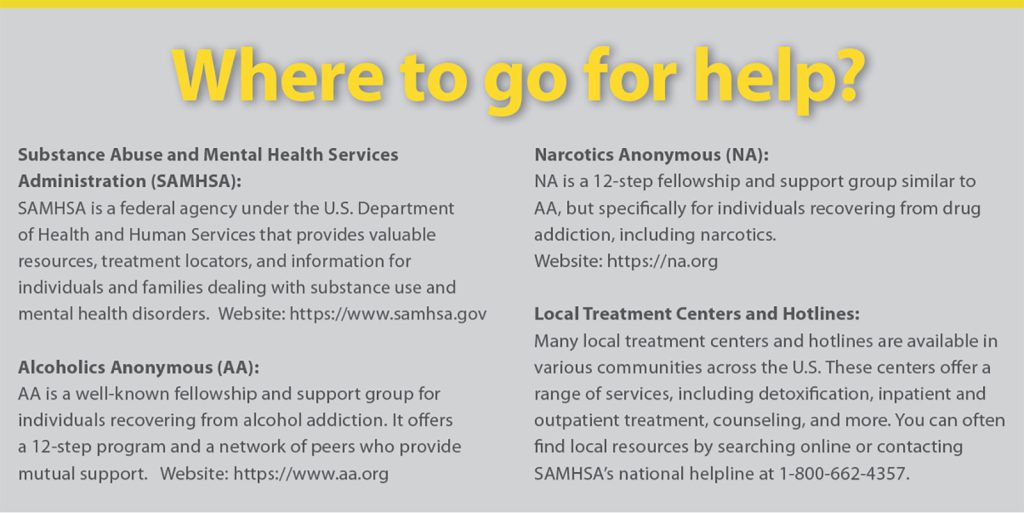Many of those struggling with addiction are people we know – our family members, our friends, our co-workers, and our neighbors. They face a wide range of stigmas that may prevent them from seeking treatment. We can stand against the stigma of substance use disorder by learning and listening. Whether you or someone you know is suffering from addiction, the more you know about opioid and substance use disorders, the more compassionate and supportive person you can be.
How widespread is addiction, according to data up to 2021:
Alcohol Use Disorder (AUD): In the U.S., an estimated 14.1 million adults (aged 18 and older) had AUD in 2019, as reported by the National Institute on Alcohol Abuse and Alcoholism (NIAAA).
Illicit Drug Use Disorder: The Substance Abuse and Mental Health Services Administration (SAMHSA) reported that approximately 19.3 million people (or 7.4% of the U.S. population aged 12 or older) had a substance use disorder related to the use of illicit drugs in 2019.
Prescription Drug Misuse: The misuse of prescription medications, including opioids, is also a significant concern. In 2019, about 9.7 million people aged 12 or older reported misusing prescription pain relievers, according to SAMHSA.
What is addiction? Those who are struggling with substance use disorder are unable to control their use of illegal or legally prescribed drugs. For many, addiction begins quietly – maybe with the start of recreational drug use or with a doctor’s prescription of opioids and other painkillers. Whatever the reason, once addicted, this disease affects a person’s brain and they will likely continue to use the drug despite repercussions. The disease of substance use disorder can change lives, disrupt dreams, and ruin relationships. Addiction is a disease, but with support and treatment, there is hope.
Signs of drug/alcohol abuse are important to identify in order to recognize the problem. Someone might have problems at work or school because of drinking or drug abuse such as being late or not going at all. A person might drink or do drugs in risky situations, such as before or while driving a car. Someone might not remember what happened while they were drinking or doing drugs also known as blacking out. A person might incur legal problems because of drinking or drug use, such as being arrested for harming someone or driving while drunk. Family or friends might start to become worried about one’s drinking or drug use.
Signs of drug/alcohol dependence or addiction are also important to identify. One cannot quit or control how much they drink or do drugs. A person consumes more alcohol or using drugs to get the same effect. Someone might have withdrawal symptoms when stopping alcohol or drug use, such as feeling sick to the stomach, sweating, shakiness, and anxiety. A person might give up other activities so they can drink or do drugs. Someone might keep drinking or doing drugs despite it harming relationships and causing health problems.

Once we understand that addiction is a disease, the barriers to seeking and obtaining treatment are reduced. Substance use disorders can be treated and people should be aware of this fact. While there are many different types of treatment, there is no single solution or quick fix to addiction. The right treatment (or combination of treatment methods) is unique to each individual. Treatment usually includes a prescription medication that works to reduce opioid withdrawal and craving symptoms and/or to block opioids’ euphoric effects on the brain. These are most effective when combined with counseling and cognitive behavioral therapy. Counseling and cognitive behavioral therapy includes both individual and group counseling sessions that help someone learn and practice positive drug-free thoughts and behaviors. Therapy may also include referrals to other medical/psychiatric, psychological, and social services, including assistance with employment, housing, and family services.
Inpatient treatment is a program designed for someone who requires medical intervention or a structured environment to begin their recovery. Treatment services can include detox, rehab, residential treatment, and involvement in group therapy.
Outpatient treatment is an option that allows the individual to remain at home or in supportive living. Outpatient care allows people to incorporate treatment into their life while still attending school, maintaining employment, or staying connected to family. This is not a complete list of treatment types, but these general terms can help you gain a better understanding of the supportive treatments available to those fighting substance use disorder.
Understanding substance use disorder as a disease leads to empathy for those with the disease and will help encourage people to seek and access treatment. There is no quick fix for addiction, but there are many types of treatment available. With treatment comes the hope of recovery. Recovery is a lifelong commitment. It’s different for everyone and there are countless paths a person can take along the journey. People need to know that recovery is possible. If you or a loved one is struggling with substance use disorder, the first step to recovery is recognizing you need help.
©2023HealthSpot References: (1) https://www.tmphysiciannetwork.org/living-well/preventative-health/drug-alcohol-awareness (2) https://www.in.gov/recovery/know-the-facts/index.html

